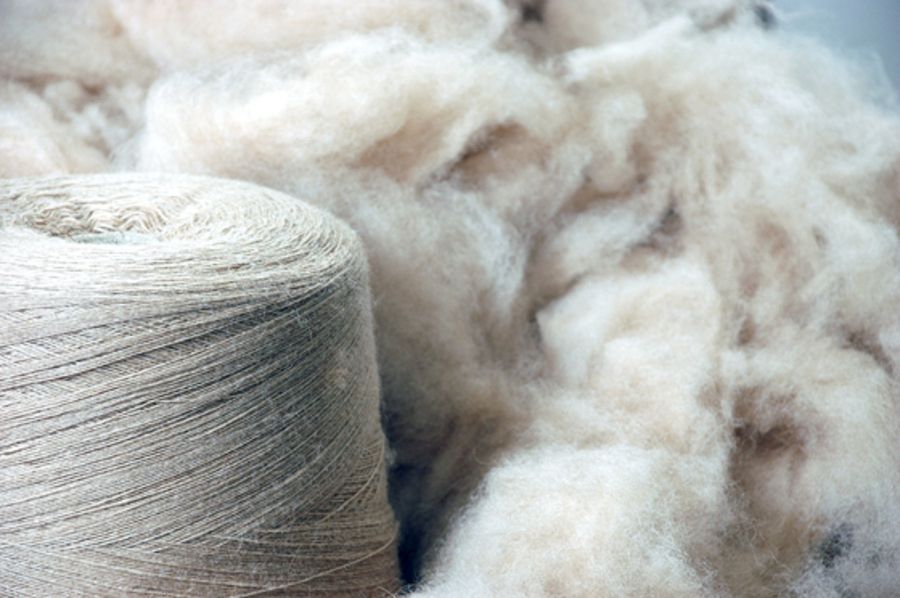From suppliers to producers

By: Undariya Rinchin, English Editor of Mongolian Economy magazine
“Our vision is that all cashmere is produced in an environmentally friendly way that safeguards the livelihoods of herding communities and protects the important, fragile environment in the way they live.” – Sustainable Fibre Alliance
Cashmere powerhouses
Mongolia is the largest cashmere producer in the world. President Kh.Battulga said ““In 2017, only 1,100 tons out of total of 9,400 tons raw cashmere, which is almost 50 percent of world cashmere, is processed within the country while the rest of 8,300 tons is exported mainly to China in raw [form] without adding value,” Nearly 40 percent of Mongolia’s exports are from cashmere and as the global demand for the textile increases, it is having dire consequences on the Mongolian grasslands. One of the largest remaining grasslands in the world.
China is officially known to be the world’s leading producer of dehaired cashmere and cashmere finished products. Marina Romanov wrote in Mongolia Briefing: “Cashmere down hair in China comes from goats grazing on the plains of Inner Mongolia, Xinjiang, and the Himalayan Mountain highlands leading to the Tibetan Plateau — regions surrounding the Gobi Desert, which also constitutes a third of Mongolia’s territory. The fibers are locally combed, cleaned, dyed, and spun before being knitted into fabric in northern Chinese mills or exported.”
To each their own
However, they face their own set of problems. Chinese cashmere goats are farmed, not herded, making them subjects to animal cruelty. Yahoo News described it as “Horrific footage of goats yelling in pain as workers ripped out their fur.” The Mongolia name was perhaps unconventionally attached to the scandal as 70 percent of Chinese cashmere comes from Inner Mongolia. The steppe nation still use the ancient and the only cruelty-free method of cashmere extraction “combing”. This is because Mongolian goats are not farmed, but herded free range.
Despite being locked up in small spaces, Chinese cashmere is considered sustainable while Mongolian cashmere is not. There is a very important reason to this. Peter Deneen from the Glacier Hum wrote “In Mongolia, the second largest cashmere wool-producing country, a confluence of climatic and political forces, coupled with global cashmere demand, are creating instability.” Cashmere production became one of the main reasons for the deterioration of the grasslands.
Prior to the Democratic Revolution, there were 4.4 million goats in Mongolia. With reduced government regulation and market forces, within the past 20 years, Mongolia’s goat population has almost quintupled. While eating grass, goats are very selective and scout out the most nutritious grass and pull them out with the root. It was evident that the goat population in Mongolia is way more than what the grasslands can support.
It was quickly realized that the country needs to have less goats, but have selective breeding so that the overall product would be worth more. Financed by mining giant Rio Tinto, the Wildlife Conservation Society kicked off the Sustainable Cashmere project kicked off. Perhaps this fibre is truly gold as it is paid by it. The project aims to selectively breed livestock so that the whitest goats are prioritized. This is preferred by manufacturers as it is better for dying. Additionally, the herders are taught on how to sustainably manage their livestock, which was highlighted during the Sustainable Fibre Alliance (SFA).
Past the Production Line
SFA Chairman Charles Hubbard and CEO of Johnstons of Eligh Simon Cotton met with the Mongolian economy and gave a dual interview, answering the same questions regarding sustainable cashmere from a business and a non profit organization perspective. The SFA works with the extended cashmere supply chain from herders to retailers with the goal to promote sustainability standard for cashmere production in order to preserve and restore grasslands, ensuring animal welfare and secure livelihoods.
Johnstons of Eligh get cashmere both from China and Mongolia. Though the quantity of imports from the two countries are nearly at the same level, he noted that he pays more for Chinese cashmere as they are of higher quality which makes dying and manufacturing better. Charles Hubbard explained that in order to become sustainable, Mongolian cashmere needs to go from quantity to quality.
Another Solution
It appears that neither China nor Mongolia plan to decrease their cashmere production. Nonetheless, we must keep in mind that goats make up of less than one third of Mongolia’s livestock. Even though the other fibres may not be considered as luxurious as cashmere, they have their benefits as well. For instance yak is extremely sustainable and light on the land because they graze without uprooting the native grasses like other animals.
During the Sustainable Fibre Alliance Midterm Review which took place in Mongolia, William S. Infante of Hangai Mountain Textiles spoke to our magazine. The company is based in Colorado with a presence in Mongolia. Their fibres include yak, camel, and cashmere that are had combed. They also ensure the value-added production remains in-country for herder families.
Fibre will continue to be an important means for Mongolia. Thus, taking measures to ensure its sustainability and meeting with the international standards is a large investment to the future. For tens of thousands of years, the animals in Mongolia had evolved, producing thick and quality coats, they survived the harsh winters. Over time, this gave Mongolian cashmere and fibres advantage above others. n